|
|
||
|
20 February 2024 |
||
|
- Exploring India’s Fintech Environment: Addressing Challenges and Proposing Solutions
- Unveiling the Mysteries of Mimas: An Investigation into Saturn’s Tiniest Moon
- Discovery of Harappan Civilization Settlement near Dholavira at Lodrani Site
- Tracking Progress on Sustainable Development Goals in Asia and the Pacific: 2024 Report
- Supreme Court Urges Adherence to the Dictionary Definition of “Forest” as per the ’96 Judgement


- Exploring India’s Fintech Environment: Addressing Challenges and Proposing Solutions
Introduction
- The Standing Committee on Communications and Information Technology recently raised concerns about the overwhelming presence of foreign-owned fintech apps within India’s digital payment landscape.
- While UPI holds a considerable share of digital transactions in terms of volume, its value share remains relatively modest, prompting inquiries into the distribution and oversight of digital payment platforms.
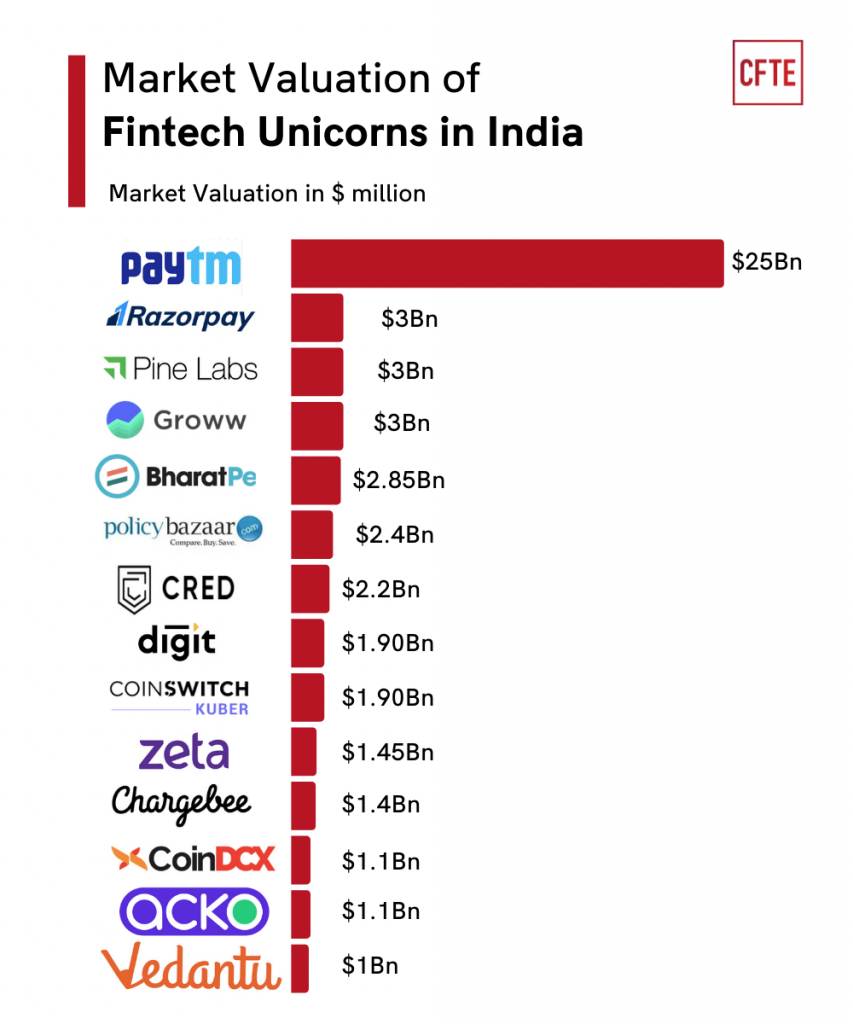
Understanding Fintech
- Fintech, a portmanteau of “financial” and “technology,” refers to businesses utilizing technology to enhance or automate financial services.
- These encompass payment solutions (e.g., Bharatpe), lending platforms (e.g., CRED), insurance providers (e.g., Digit Insurance), investment platforms (e.g., Zerodha), and regulatory technology firms (e.g., Razorpay).
Regulatory Landscape in India
- Direct regulatory intervention by the RBI in overseeing fintech companies is limited.
- However, initiatives like the Fin-Tech Regulatory Sandbox and the Payment System Operators license aim to embrace and regulate aspects of the fintech sector.
- The RBI is also working on a regulatory framework to support the orderly growth of digital lending, emphasizing the necessity for lending activities to be conducted solely by entities regulated by the central bank or under other applicable laws.
Significance of Fintech Discussion
- India stands as one of the world’s fastest-growing Fintech markets, with its market size reaching $50 billion in 2021 and anticipated to reach around $150 billion by 2025.
- The industry’s total addressable market in India is estimated to be $1.3 trillion by 2025, with Assets Under Management and Revenue projected to be $1 trillion and $200 billion by 2030, respectively.

Analysis of the Current Ecosystem
- The Committee emphasizes the importance of regulating digital payment apps effectively, particularly considering the increasing trend of digital transactions in India.
- It suggests that regulatory bodies such as the RBI and NPCI would find it more manageable to regulate domestic apps compared to foreign counterparts.
- Foreign-owned fintech companies, like PhonePe and Google Pay, dominate the Indian market, holding significant shares in transaction volume, while NPCI’s BHIM UPI holds a smaller market share.
- The NPCI had previously imposed a 30% volume cap on transactions facilitated through UPI by third-party apps to maintain market equilibrium and address risks, with compliance deadlines extended to December 2024 to facilitate market growth.
Concerns Regarding Fraud
- Instances of fintech platforms being exploited for money laundering, such as the case of the Abu Dhabi-based app Pyppl administered by Chinese investment scammers, have been observed by the Committee.
- This poses challenges for law enforcement agencies in tracing illegal money trails.
- While the fraud to sales ratio has remained relatively low despite the surge in digital transactions, concerns persist regarding UPI frauds affecting a small percentage of users.

Impact on the Ecosystem
- Local fintech players have an inherent advantage in comprehending customer needs and the broader market infrastructure.
- Conversely, foreign fintechs bring expertise in new technologies and global connectivity.
- McKinsey’s Global Payments Report indicates that instant payments, including UPI, may contribute less than 10% of future revenue growth due to minimal transaction fees.
- Nevertheless, the transition towards digital payments enhances security and access to commerce channels, offsetting the costs associated with managing cash transactions.
Conclusion
Achieving a balance between the dominance of foreign-owned fintech platforms and the support of local players is crucial for the sustainable growth of India’s digital payment ecosystem. Effective regulation, combined with efforts to combat fraud and promote financial inclusion, will play pivotal roles in shaping the future trajectory of digital payments in the country.

- Unveiling the Mysteries of Mimas: An Investigation into Saturn’s Tiniest Moon
Introduction
Recent research published in the journal Nature indicates the possibility of a liquid ocean beneath the icy exterior of Mimas, challenging previous understandings of the moon’s composition and internal dynamics.

About Mimas
- Discovery: Initially identified by William Herschel on September 17, 1789.
- Characteristics: Mimas holds the distinction of being the smallest and closest of Saturn’s major moons.
- Size: Its diameter measures approximately 396 kilometers (246 miles), rendering it one of the smallest celestial bodies known to possess a spherical shape.
- Features: Mimas is notable for its prominent Herschel Crater, colloquially referred to as the “Death Star” due to its resemblance to the fictional space station from the Star Wars franchise.
- Composition: Predominantly comprised of water ice with a minor rock component.
- Orbit: Mimas orbits Saturn at a distance of roughly 185,520 km (115,220 miles).
- Exploration: The Cassini spacecraft provided detailed imagery of Mimas’s surface during its mission to Saturn.
Astronomical Insights
- Potential Liquid Ocean: Analysis of Mimas’s orbital behavior, utilizing data gathered by NASA’s Cassini spacecraft, suggests the existence of either an elongated silicate core or a global ocean beneath its surface.
- Librational Model: Examination of Mimas’s librations and orbital variations led to an impasse, prompting speculation about a subsurface ocean. Theoretical models incorporating viscoelastic outer layers and hydrostatic interior interfaces propose an ice shell thickness ranging from 20 to 30 kilometers.
- Surface Heat and Eccentricity: Estimates indicate a surface heat release of around 25 milliwatts per square meter, which is anticipated to halve Mimas’s eccentricity over the course of 4 to 5 million years. Simulations suggest the ocean may have formed between 2 and 25 million years ago, potentially giving rise to hydrothermal activity.
Implications and Findings
- Comparative Analysis: Parallels between Mimas and Enceladus, another of Saturn’s moons possessing a global ocean, suggest the likelihood of hydrothermal activity despite surface disparities.
- Ice Shell Composition: Observations support the viscoelastic properties of Mimas’s outer icy layer and hydrostatic interior interfaces, corroborating the theoretical ice shell thickness derived from calculations.

- Discovery of Harappan Civilization Settlement near Dholavira at Lodrani Site
Introduction
- There’s a tale surrounding Lodrani, a small village near Dholavira in Kutch, suggesting that beneath its surface lies a hidden treasure of gold.
- This rumor spurred locals to commence an excavation roughly five years ago.
- However, instead of gold, the dig unearthed something unexpected: a fortified settlement from the Harappan era.
- This discovery challenges previous assumptions about the history of the region.

Archaeological Findings at Lodrani
- Led by Ajay Yadav and Damian Robinson from Oxford’s School of Archaeology, the archaeological exploration uncovered a remarkably well-preserved Harappan settlement.
- Named Morodharo, this site bears striking architectural resemblances to Dholavira.
- Contrary to initial beliefs that it was a medieval fortress, Morodharo reveals evidence of a flourishing civilization dating back approximately 4,500 years.
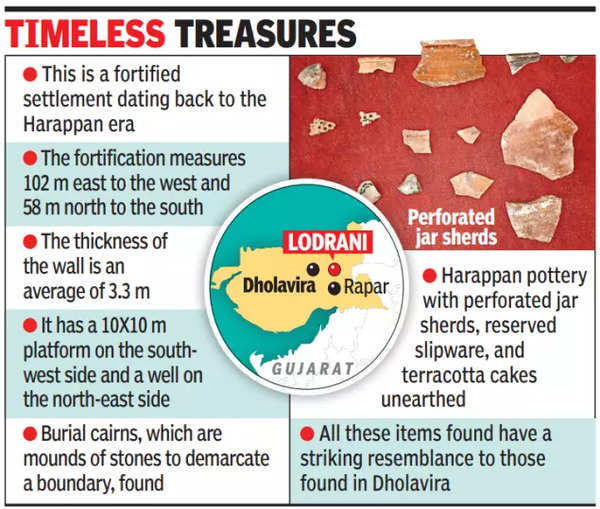
Significance
- The excavation yielded a significant amount of Harappan pottery, similar to findings at Dholavira, suggesting a link between the two settlements.
- Furthermore, experts place Morodharo within the mature to late Harappan periods (2,600-1,300 BCE), offering insights into the ancient chronology of the region.
Insights from Archaeologists
- Both Dholavira and Morodharo’s reliance on the sea implies the presence of navigable waters near the Rann of Kutch during ancient times.
- Lodrani, once overlooked, now gains recognition in the archaeological realm, highlighting the significance of local initiatives in uncovering historical treasures.
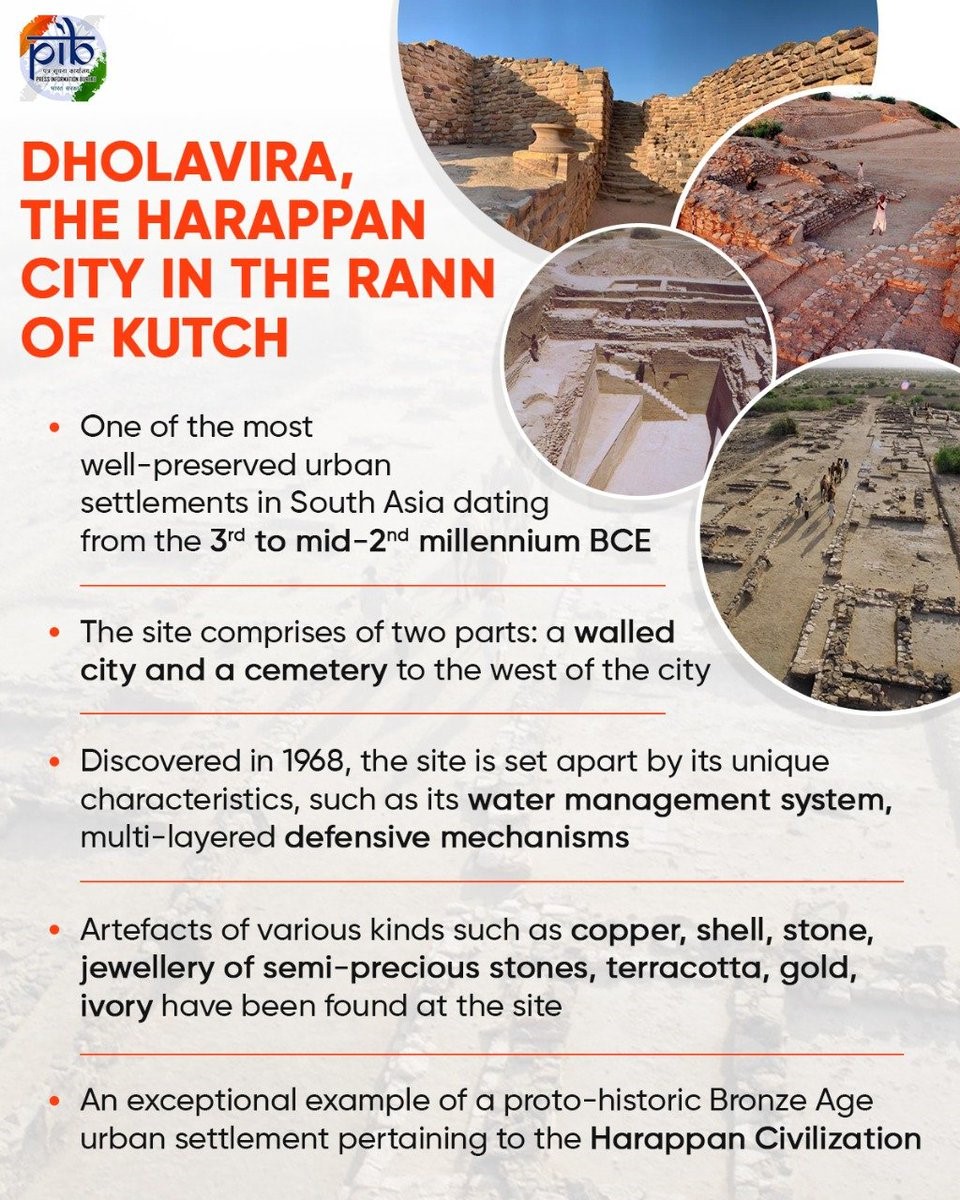
- Tracking Progress on Sustainable Development Goals in Asia and the Pacific: 2024 Report
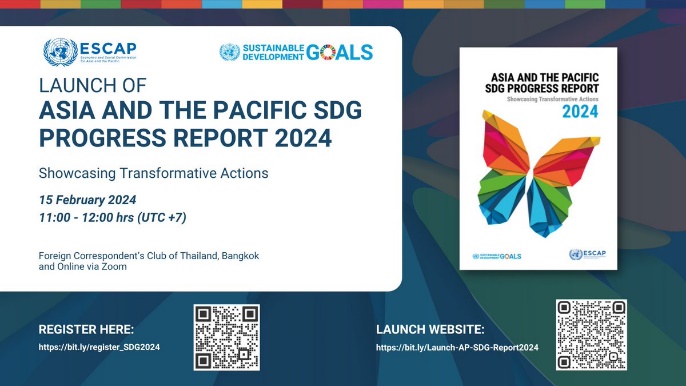
Context: According to a report from UNESCAP, the Asia-Pacific region is currently lagging behind the 2030 target for achieving the Sustainable Development Goals (SDGs) by 32 years.
Progress on SDGs in Asia-Pacific:
- None of the 17 UN-mandated SDGs are currently being met in the Asia-Pacific region.
- At the current pace, the region is expected to achieve only one-third of the necessary progress by 2030.
- This delay in reaching the SDGs pushes the target year to 2062.
Challenges in Climate Action (SDG 13):
- Progress toward SDG 13, particularly in climate action, is significantly lacking.
- All targets under SDG 13 are either stalled or regressing, with 20 targets from 14 SDGs showing deterioration compared to the 2015 baseline.
- The report stresses the urgent need to incorporate climate action into national policies to effectively address climate-related disasters.
Data Availability Challenges:
- About 67% of the 169 SDG targets in the region cannot be measured due to data gaps.
- While data availability for SDGs has increased since 2017, substantial gaps persist, especially in climate-related indicators.
- Insufficient data impedes progress monitoring, with approximately 62.5% of indicators under SDG 13 lacking data entirely.
Impact on Key Goals:
- Progress on critical goals such as hunger (SDG 2), health (SDG 3), clean water (SDG 6), affordable energy (SDG 7), and sustainable cities (SDG 11) has been inadequate.
- These goals are intertwined with climate change, posing significant challenges to food security, livelihoods, and the economy of the region.
- Climate change and extreme weather events jeopardize the achievement of SDG targets and are recognized as severe global risks for the next decade.
Recommendations for Action:
- The report advocates for increased investment in sustainable infrastructure and renewable energy sources to effectively tackle climate challenges.
- Urgent attention is required to prioritize goals related to climate action, food security, health, and sustainable development to alleviate the impact of climate change on the region’s SDG progress.
- Supreme Court Urges Adherence to the Dictionary Definition of “Forest” as per the ’96 Judgement
Introduction
On February 19, 2024, the Supreme Court issued an interim order reiterating the significance for states and Union territories (UTs) to adhere to the definition of ‘Forest’ established in the TN Godavarman Thirumalpad v. Union of India judgement of 1996.
This directive came amid the proceedings of a public interest litigation challenging the constitutionality of the Forest (Conservation) Act, which underwent amendment by the Union government in 2023.
Reasoning Behind the Action
- The petitioners raised concerns regarding the 2023 amendment, alleging that it had narrowed down the expansive definition of ‘forest’ set forth in the Godavarman judgement.
- They argued that this alteration might potentially facilitate the diversion of forest lands for non-forest purposes.
Understanding the Godavarman Judgement
- The Godavarman Judgment, also known as the “Godavarman Case,” is a significant environmental litigation in India initiated in 1996.
- Originating as a Public Interest Litigation filed by Mr. Godavarman, a retired forest officer, it addressed issues concerning forest degradation due to various developmental activities lacking proper environmental clearances.
Key Legal and Regulatory Framework
- The case primarily interprets and implements the Forest (Conservation) Act, 1980, and the Forest (Conservation) Rules, 1981, aiming at forest conservation and wildlife protection.
- Under the Forest Conservation Act, the central government is empowered to declare areas as “reserved forest” or “protected forest,” prohibiting non-forest activities without prior approval.
- This extends to all forests in India, irrespective of their declared status or ownership.
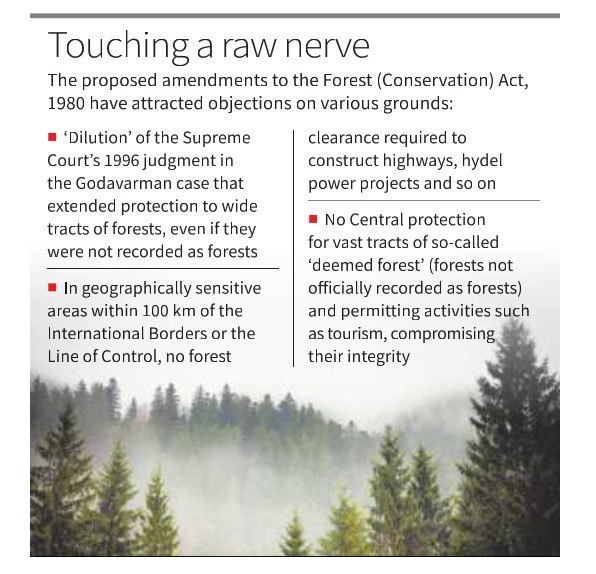
Analysis:
- The case emphasized the importance of compliance with the law and due diligence concerning the diversion of forest land for non-forest purposes.
- It clarified the extensive authority of the central government under the Forest Conservation Act, stressing stringent regulation.
- Furthermore, the court highlighted the significance of sustainable development in forest conservation and the protection of the rights of forest dwellers and tribal communities.
Impact of the Judgement
- The Godavarman case resulted in a stricter interpretation and implementation of forest laws, focusing on conservation and protection.
- It also elevated the judicial role in environmental governance, leading to increased public scrutiny of environmental decisions.
- Moreover, it contributed to the cancellation of projects diverting forest land, thus aiding biodiversity conservation and emphasizing the recognition and protection of the rights of forest dwellers and tribal communities.
- The judgement also highlighted the importance of balancing economic development with environmental protection.
Criticism of the Judgement
- Despite its merits, the judgement faced criticism for potentially hindering economic development and causing delays in decision-making and project implementation.
Key Points of the Recent Order
- The recent interim order reiterated the adherence to the 1996 Godavarman judgement until the completion of the process of land recorded as ‘forests’ in government records.
- It mandated state and UT administrations to prepare records on forest land within a year from the notification of the 2023 amendment.
- The Union government was instructed to provide a comprehensive record of land registered as ‘forest’ by expert committees constituted by states and UTs within two weeks, with compliance deadlines set for March 31, 2024.
Conclusion
The Supreme Court’s interim order emphasizes the importance of preserving forest lands as per the Godavarman judgement and ensuring compliance with environmental protection measures. It aims to uphold ecological balance and prevent the misuse of forest resources for non-forest purposes.



